5 Best Omnichannel Marketing Practices to Grow Your eCommerce Business
May 27, 2021 8 min read

Consumers engage with their favorite brands through multiple channels. They’re using a combination of web, social media, email, and live chat to buy products online. And they’re doing so from different devices — smartphones, tablets, and desktops.
It’s more important than ever for businesses to align their marketing strategies to create a more consistent shopping experience and increase engagement.
Implementing an omnichannel marketing strategy is far from easy, but it can help you retain more customers and boost your bottom line. In this article, we’ll look at omnichannel marketing best practices that you can implement to grow your eCommerce business.
What is Omnichannel Marketing?
Omnichannel marketing is the process of providing a seamless shopping experience across all digital channels to your customers. The goal is to strengthen your brand message and drive more profitable action.
Here are some examples of omnichannel marketing:
- A customer buys a product online and picks it up in-store, where a rep has everything ready for them.
- A customer receives an SMS message alerting them about an ongoing sale while in-store.
- A customer sees a retargeting ad on Facebook with a product they added to their shopping cart but didn’t complete.
- A customer receives an offer from SwagBucks via email and completes their purchase through a mobile app.
Each channel complements one another as the customers seamlessly move from one touchpoint to the next.
Why is Omnichannel Marketing Important?
Consumers today aren’t just relying on a single channel to make a purchase. A global survey on shopping behavior found that 67% of consumers use multiple channels to complete a single transaction.
A consumer might conduct a search on Google from their desktop and add a product to their shopping cart. Later, they might see a retargeting ad as they browse Facebook on their smartphone and finally decide to buy it.
This example illustrates how complex the customer journey is, which makes it all the more important for brands to adopt an omnichannel marketing strategy.
Brands that employ an omnichannel marketing approach enjoy 90% higher customer retention rates than single-channel brands.
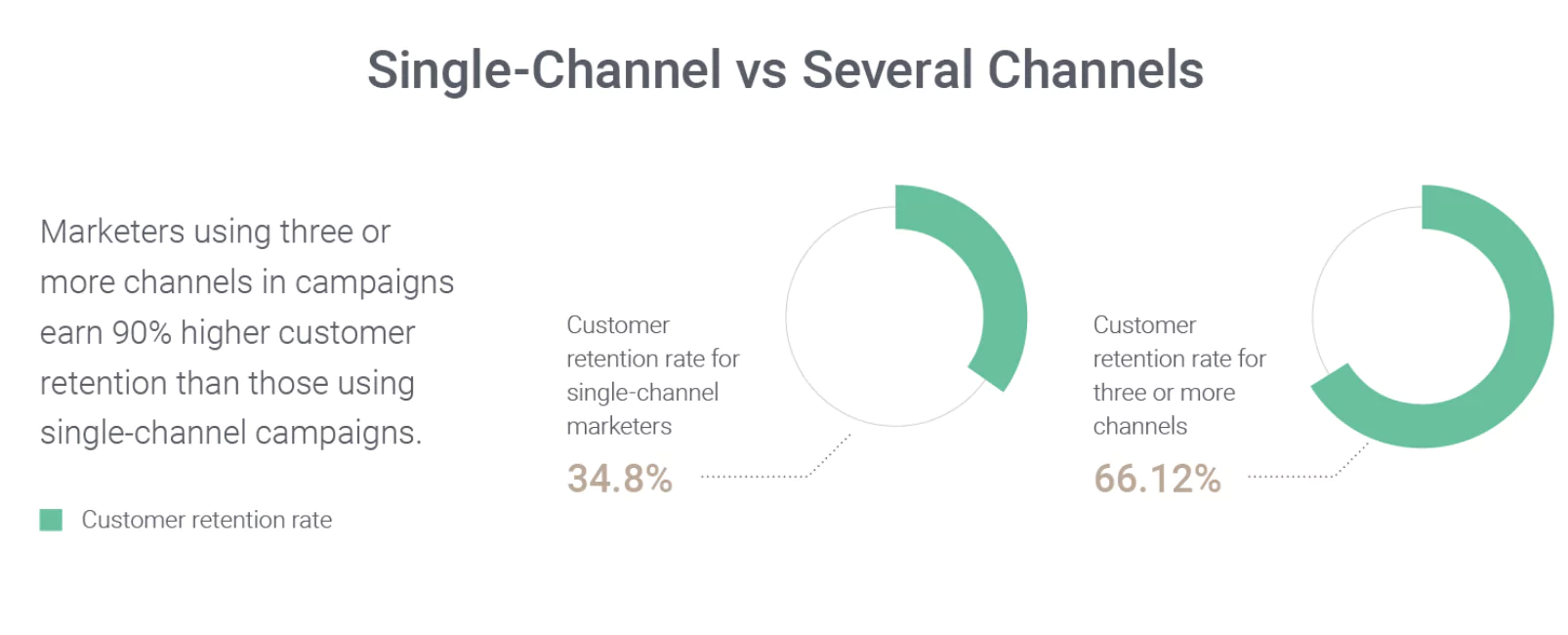
That’s not all.
Average order sizes for stores using omnichannel marketing strategies were 13% higher than single-channel brands. An omnichannel marketing strategy enables you to retain more customers and generate more per sale.
Before we dive into best practices, let’s look at how omnichannel and multichannel marketing differ.
Omnichannel vs. Multichannel Marketing
It’s easy to look at the words “omnichannel” and “multichannel” and assume they mean the same thing. Both have similar goals in terms of reaching target audiences. But they differ in one key aspect: integration.
The following image illustrates how omnichannel and multichannel marketing differ.
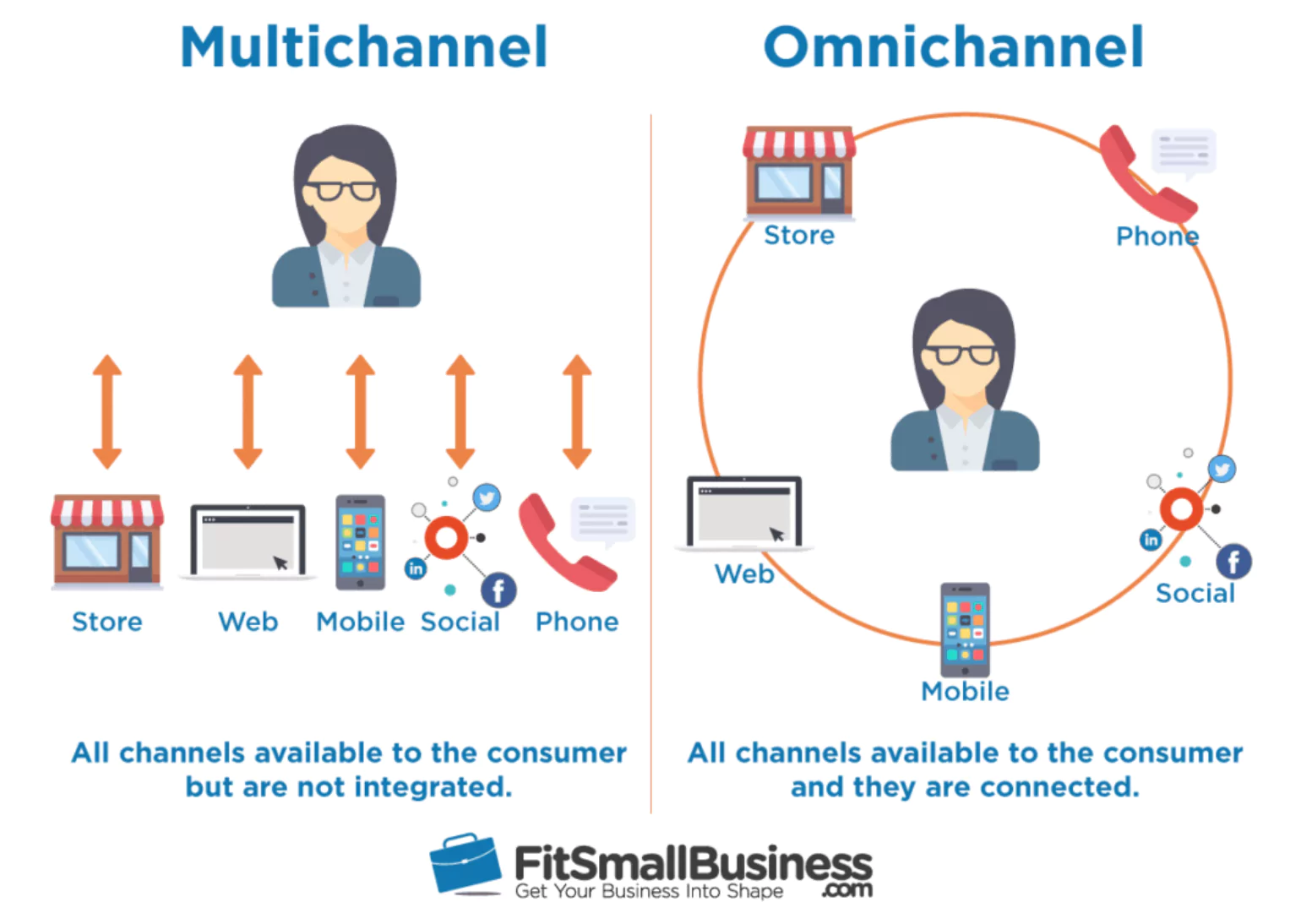
In multichannel marketing, companies run marketing campaigns that span across different channels — print, digital, social media, email marketing, etc. There’s nothing wrong with this approach, as it still allows companies to reach their target audience.
But look at the image again, and you’ll notice that each channel is independent. They don’t integrate with each other. This can lead to inconsistent messages when each channel is run by different teams.
It’s a different story with omnichannel marketing — the customer is now at the center, and each channel is integrated. They can pick up where they left off to complete their purchase. This creates a more cohesive experience than taking a multichannel approach.
Omnichannel orchestration is critical in the current age of information overload.
Your customers are bombarded with content on a daily basis, from 500 million tweets on Twitter, 576k hours of YouTube video content, and over 62,000,000 monthly podcast downloads. An omnichannel strategy helps you cut through the noise and engage more of your audience.
Now, let’s look at omnichannel marketing best practices to really take your eCommerce business to the next level.
1. Deliver a Mobile-Friendly Experience
More people than ever are accessing the web from mobile devices. Smartphones are so prevalent that you’d be hard-pressed to find someone who doesn’t have a mobile device.
Mobile eCommerce spending in the US is $47.8 billion. That figure is only projected to increase as more consumers do more of their shopping on the go.
It goes without saying that your eCommerce website needs to be mobile-friendly. Otherwise, you risk losing sales when mobile users can’t complete their purchases.
Track-POD offers a good example of a mobile-friendly experience for its route planning software page.
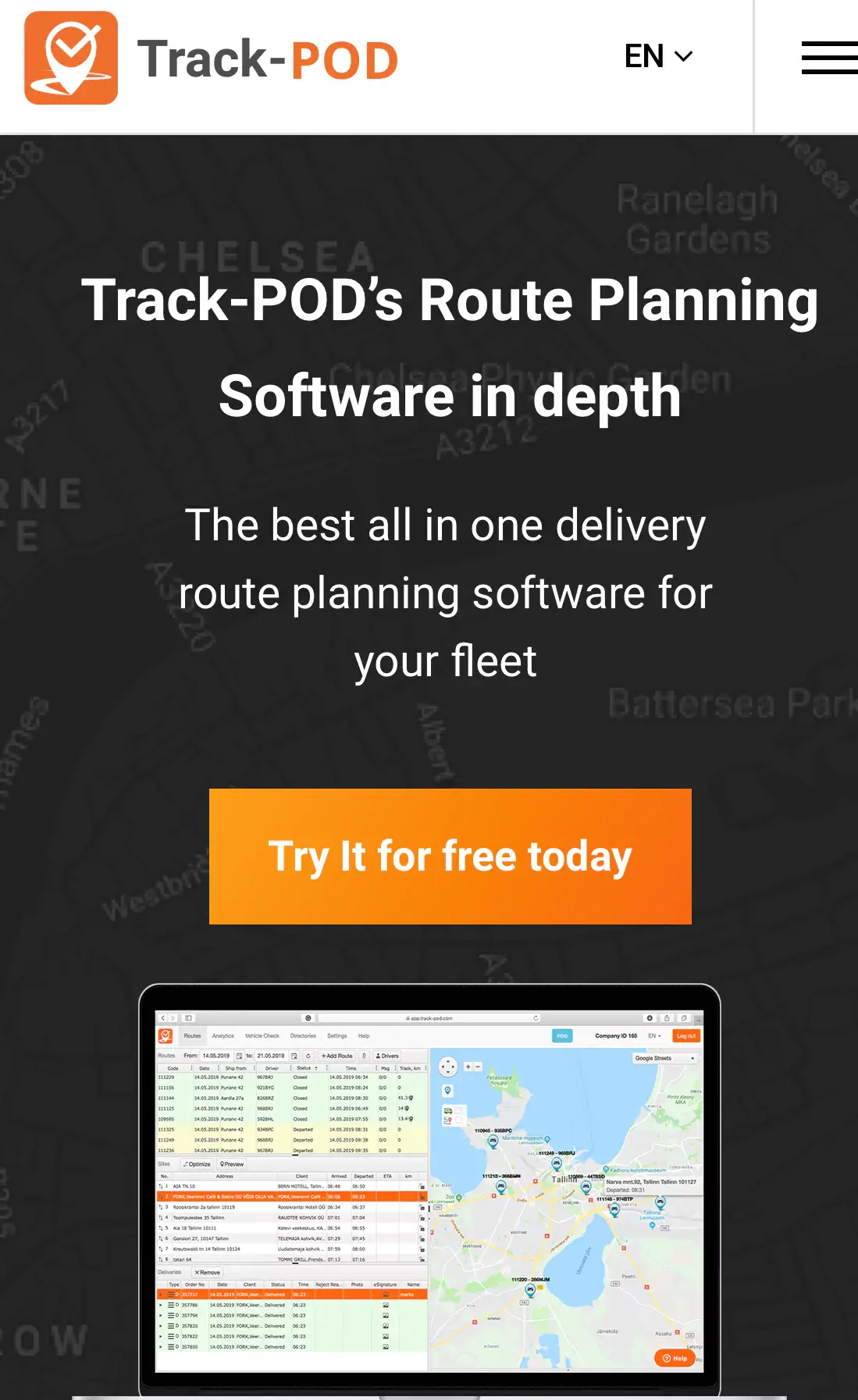
By optimizing your site for mobile devices, you’ll be able to provide a more seamless shopping experience whether your customers are shopping from a smartphone or tablet.
Google offers a free mobile-friendly test tool that you can use. Simply enter your URL and click the ‘Test URL’ button. If your site is mobile-friendly, you’ll see the following:
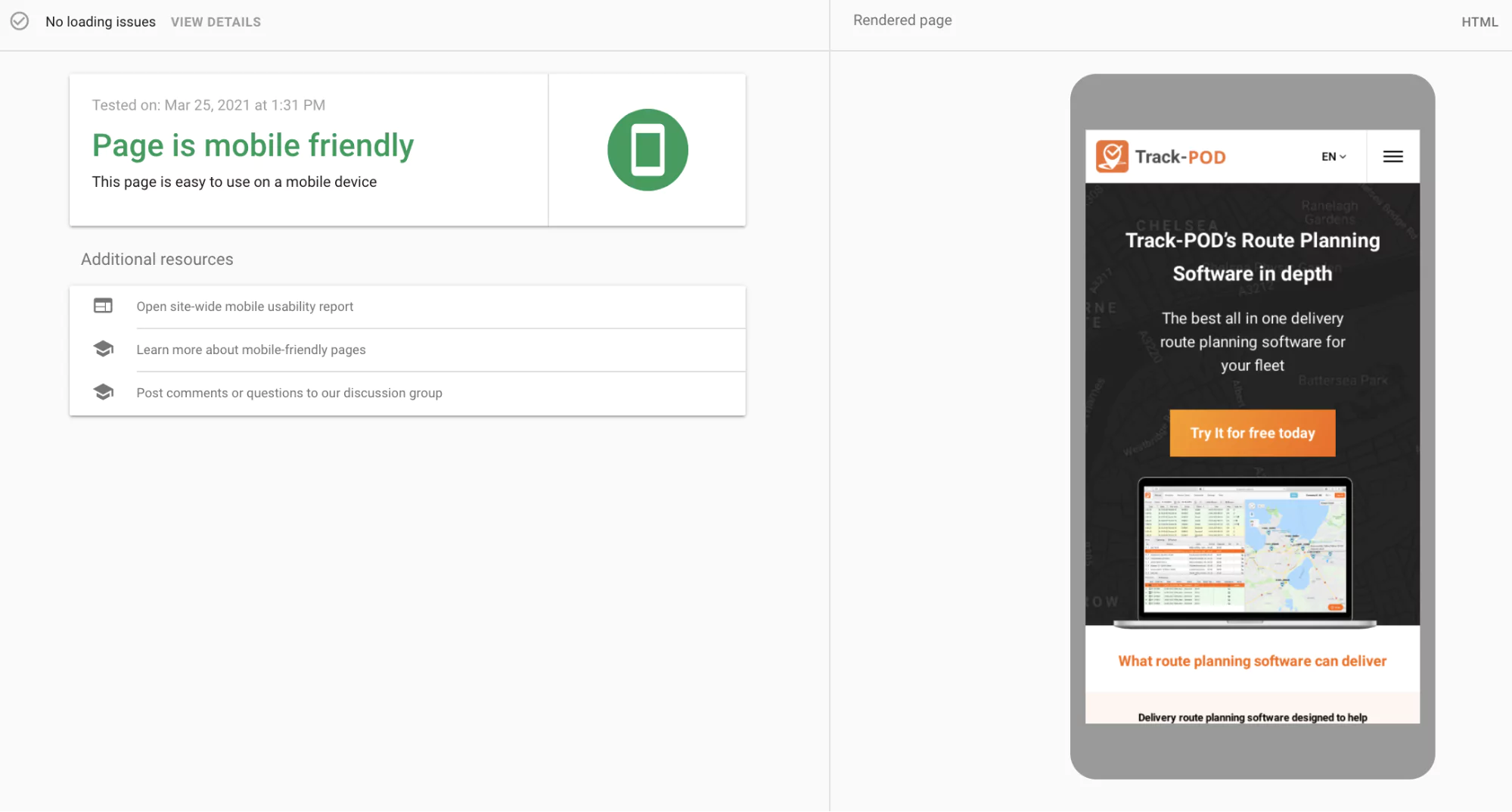
If not, you’ll see a message that says that your site isn’t mobile-friendly. Google recommends responsive design — a layout that dynamically adjusts to fit all screen sizes.
2. Determine Which Channels Your Customers Use
There are an endless number of channels that you can use to reach your audience. You can make an app, create a website, leverage social media platforms, and other channels to be in constant touch with customers and assist them whenever they are in need. But this doesn’t necessarily mean you should jump on each of them. Focusing on too many channels can spread your marketing efforts thin.
It helps to create a buyer persona — a representation of who your target audience is. It includes demographic information about your customers, such as who they are, what they do, and what channels they use.
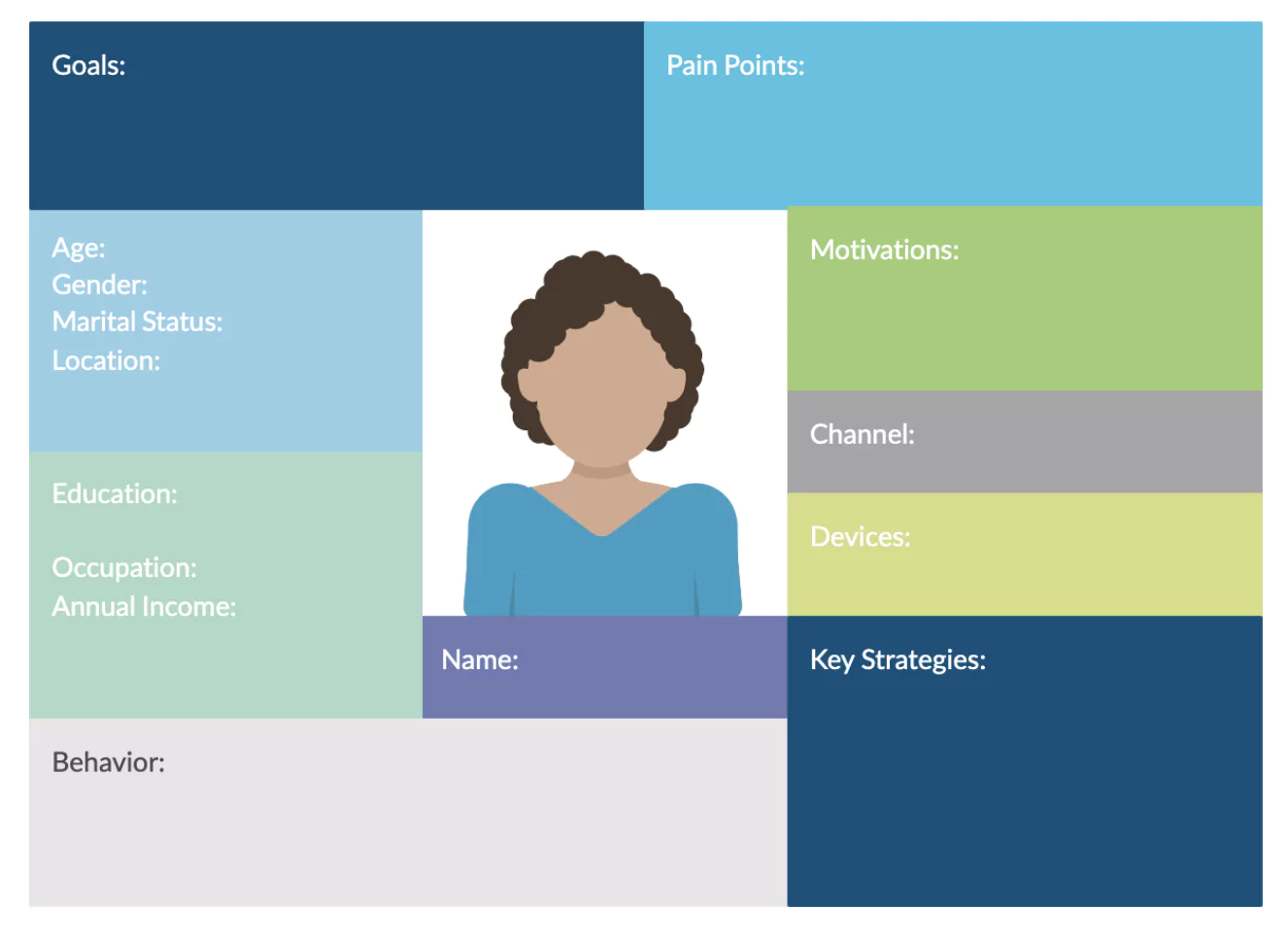
Send out email surveys to gather data about your current customers. One way to increase response rates is to include a discount.
Google Analytics is another helpful tool. Click on Audience and Demographics to gather data about your website visitors, such as their age, gender, and interests.
You should now have a much clearer picture of who your target audience is. This will help you identify the best channels for your omnichannel marketing strategy.
For example, if your demographic is young teens, TikTok would be worth your while as this age group represents 32.5% of its user base. But channels like LinkedIn won’t generate great results, as this network is geared toward working professionals.
3. Map the Customer Journey
A customer may interact with your brand numerous times before they convert. Understanding each touchpoint is key to optimizing your omnichannel marketing strategy.
A customer journey map illustrates the steps that prospects take as they become a customer. It helps you understand your customers better and what they are trying to accomplish at each touchpoint.
Here’s an example of a customer journey map:
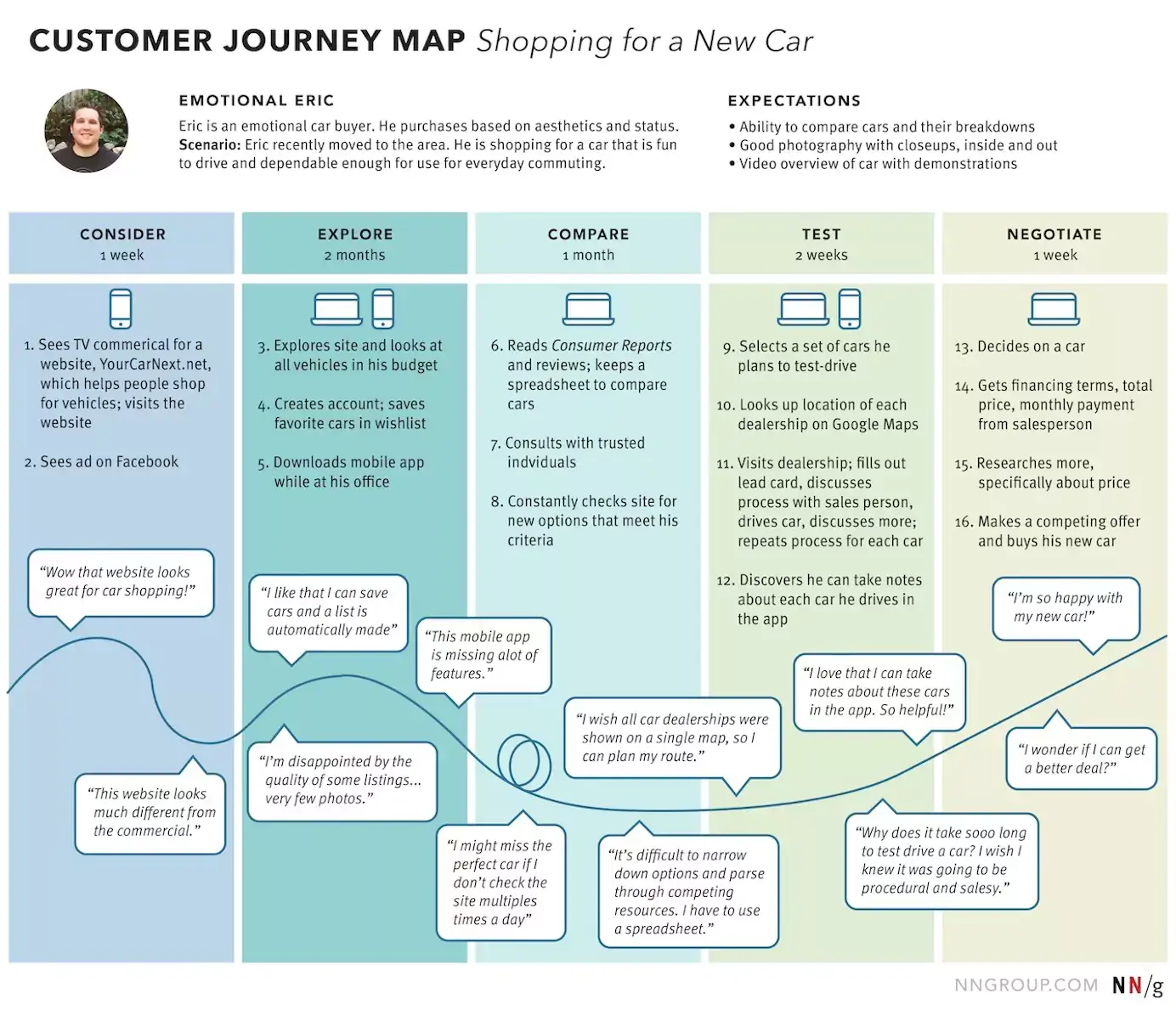
The real value of a customer journey map is that it can help you identify gaps in your omnichannel strategy. For example, Eric loves that he can create a list of cars to compare, but he’s not too thrilled about the mobile app.
This is a friction point that may cause Eric to shop elsewhere. Armed with this information, our fictional company can take steps to improve its mobile app.
You’ll want to create customer journeys for different segments of your audience. For example, Bay Alarm Medical creates different customer journeys for its medical alert systems — one for older people and another for younger family members.
Put yourself in your customers’ shoes to help you map out the customer journey. Input from your sales and marketing teams will be immensely helpful here. You can use a project management tool to help you track bottlenecks, improvements, and strategies in each stage of the journey.
4. Unify Your Customer Communications
Shopping online isn’t the same as shopping in-store — you can’t exactly hold a product in your hands. Product images can give you a better idea of what something is like. But you still can’t test out any features.
Naturally, visitors will have questions about your products before buying. Nailing down customer communications is crucial as part of your omnichannel strategy.
In today’s fast-paced world, consumers are increasingly impatient. Eighty-two percent of consumers rate an “immediate” response as very important for marketing and sales inquiries. Take too long to respond, and you risk losing those sales.
Consider implementing live chat on your site. Live chat allows visitors to speak directly with a representative if they have questions, and they can help grow your email list and increase your lead pool.
Here’s an example of how Herbal Dynamics Beauty uses live chat on its product pages to help shoppers.
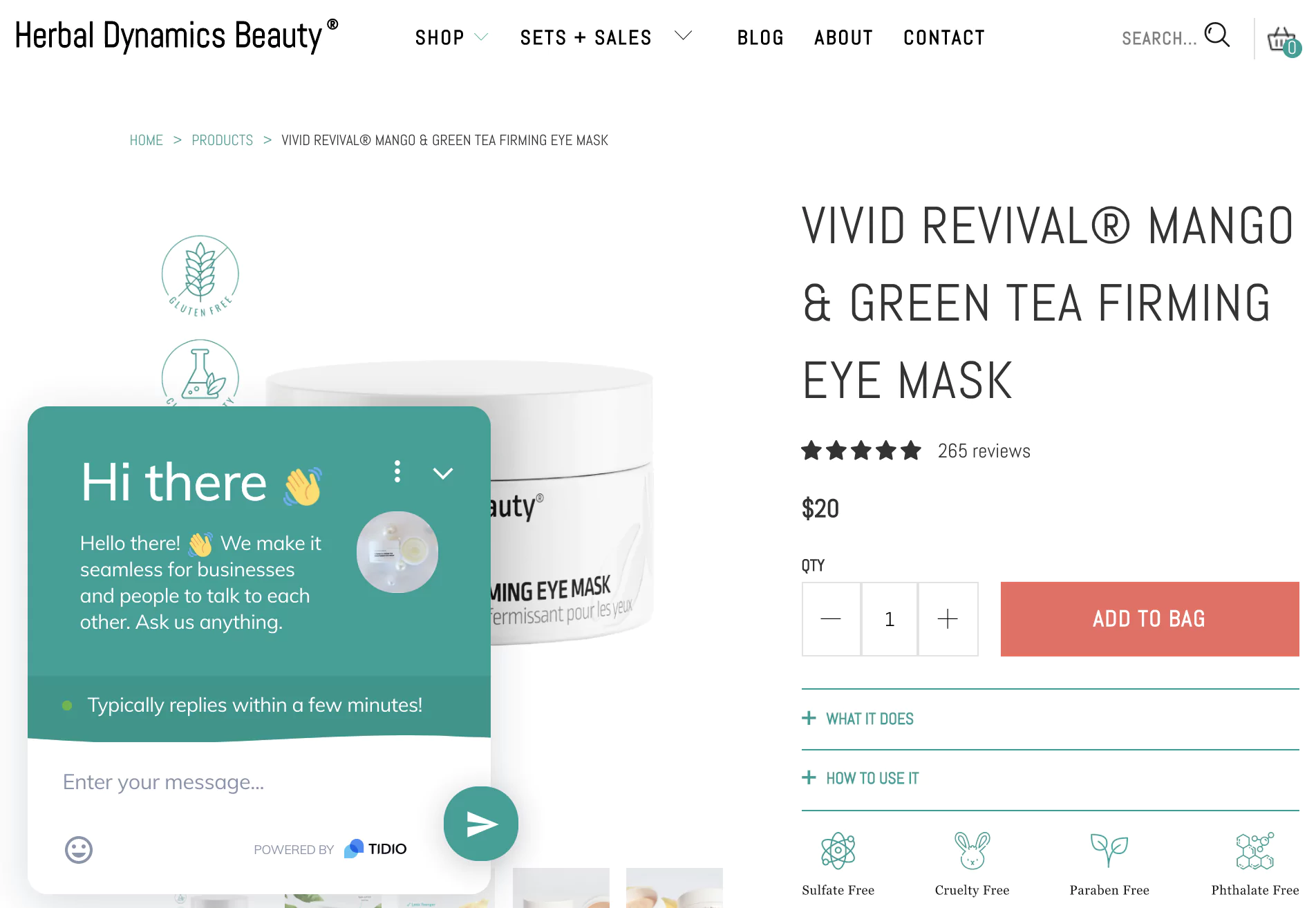
Of course, not all your visitors will use live chat. Some may prefer to reach out through other support channels like phone, email, and social media.
Offer different ways for customers to get in touch and consider using customer service software to unify those communications. This will allow your teams to handle sales or marketing-related inquiries.
5. Use Marketing Automation Software
Managing your omnichannel marketing strategy on your own across different channels is neither easy nor practical. Marketing automation software helps you scale your campaigns and deliver a seamless experience to your customers.
One example is using email software to manage your list and build email drip campaigns. If someone subscribes to your blog, you can create sequences that send welcome emails and personalized offers.
Conclusion
Customers today use multiple channels to shop from their favorite brands. If you have yet to implement an omnichannel marketing strategy, then you’re leaving sales on the table.
Follow the best practices outlined here to grow your eCommerce business by creating a seamless customer experience across all channels.

Joanne Camarce is a digital marketing expert specializing in SEO, eCommerce, and social media. She loves meeting new people and embraces challenges. When she’s not wearing her marketing hat, you’ll find Joanne perfecting her art and music skills.





